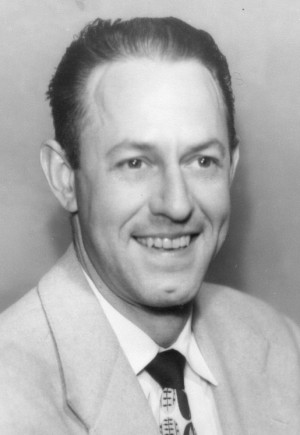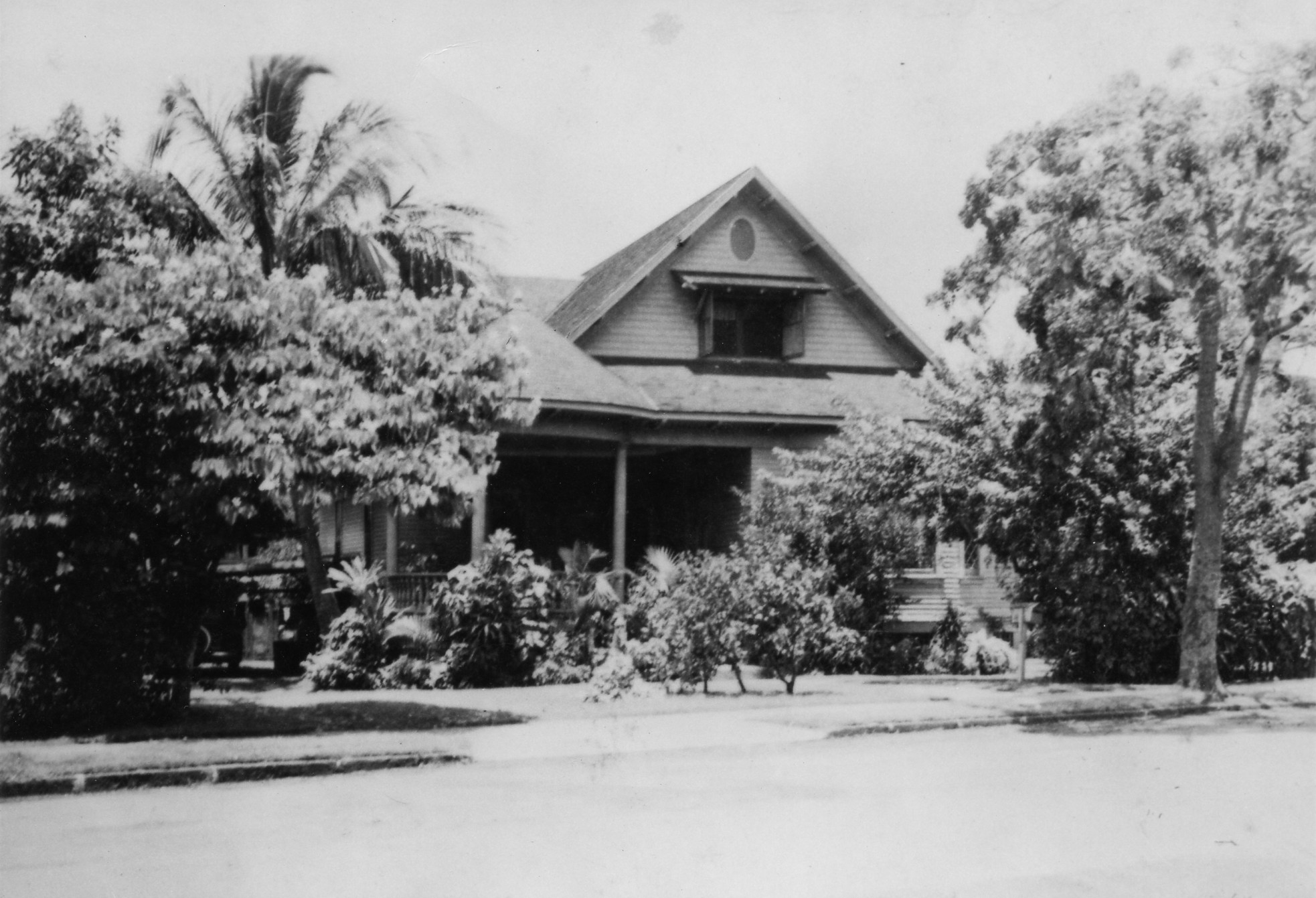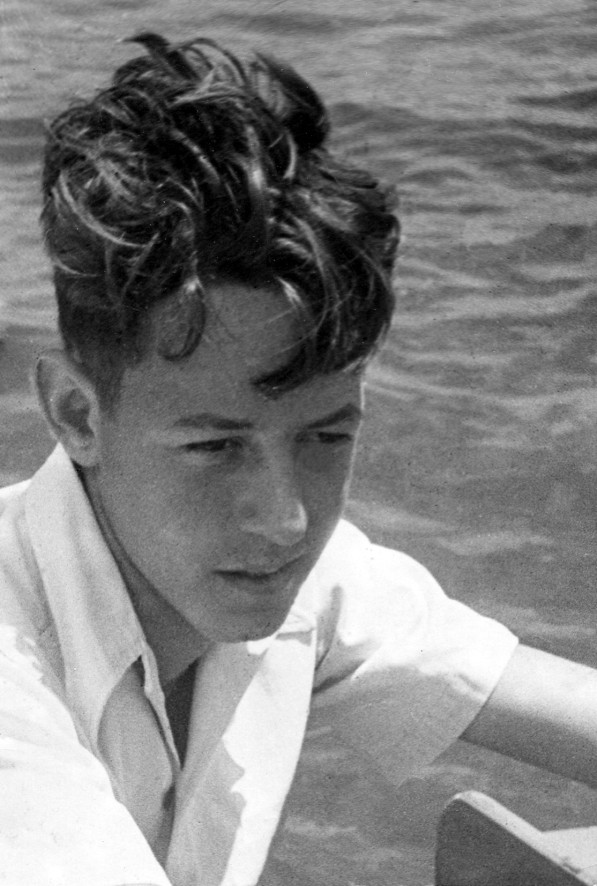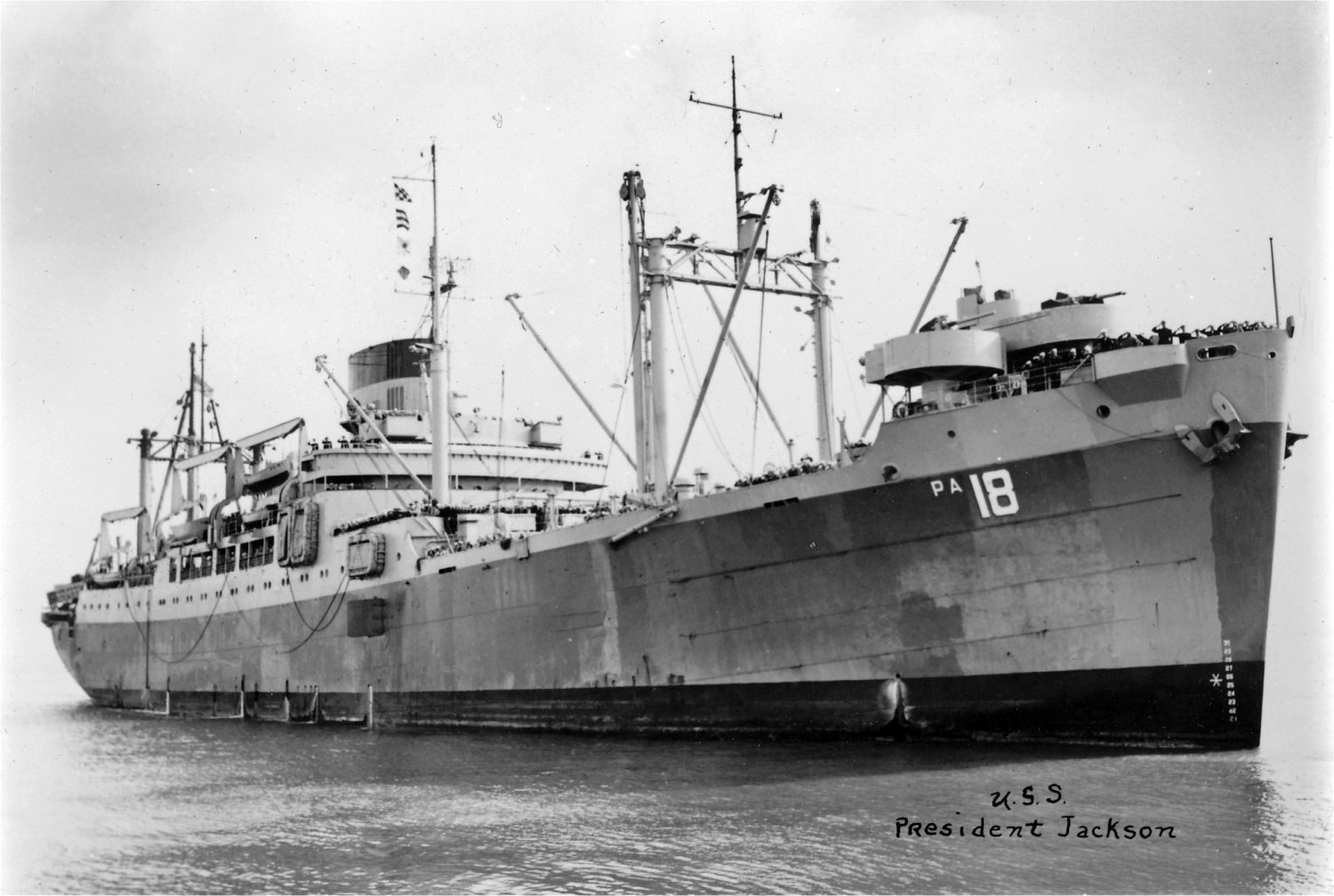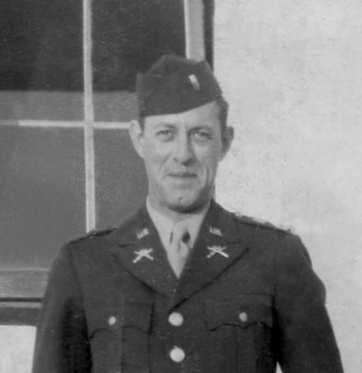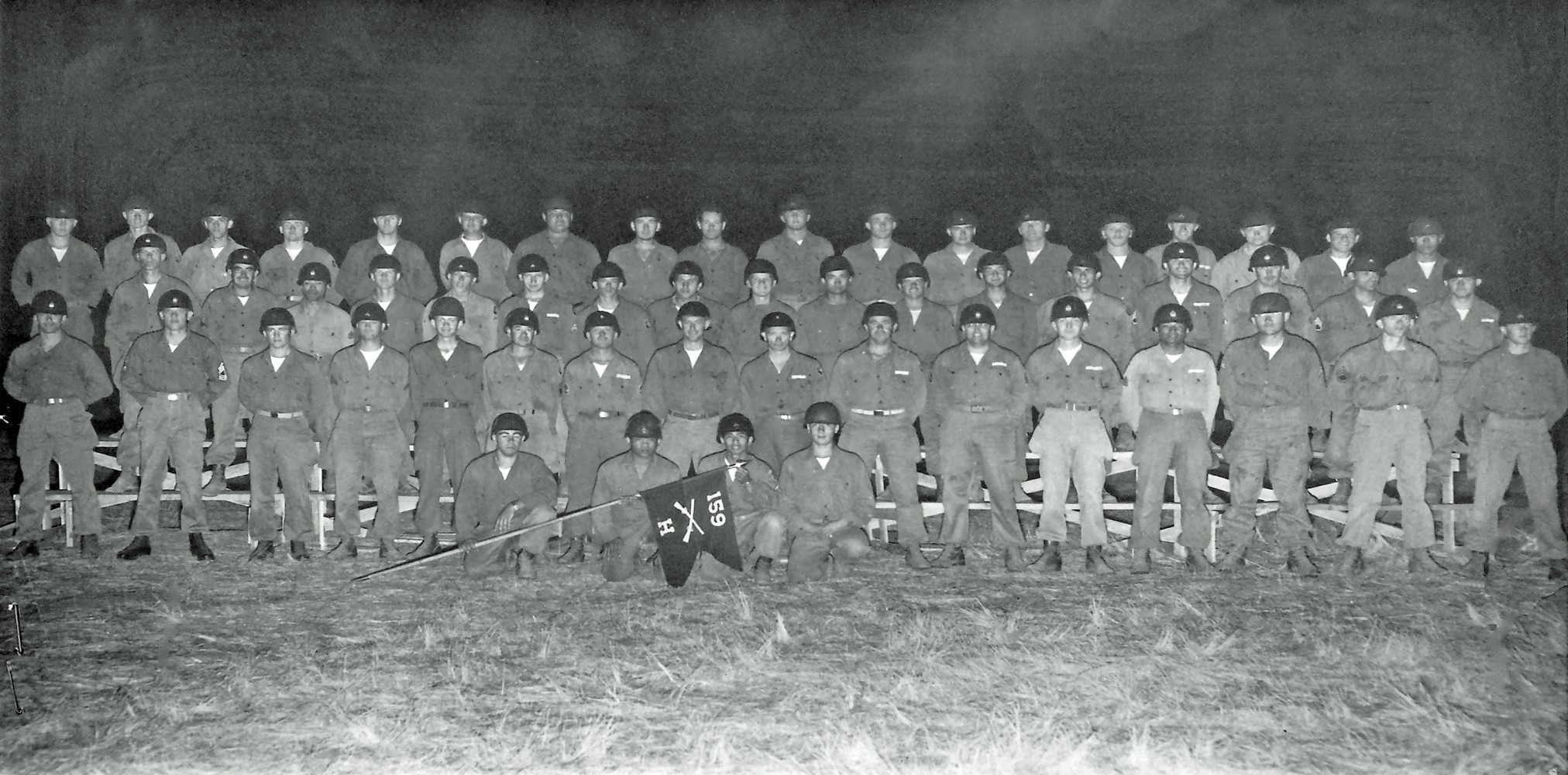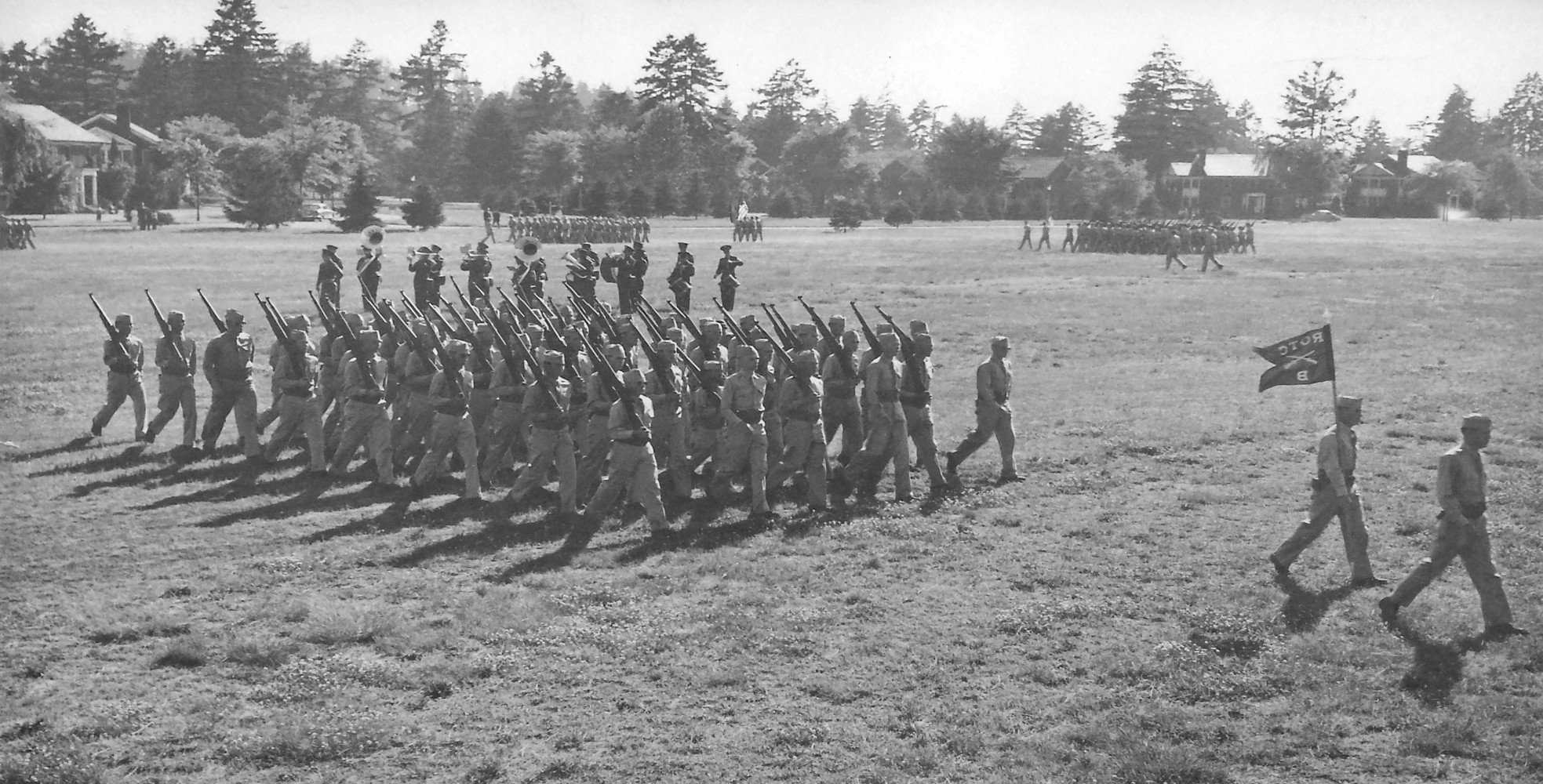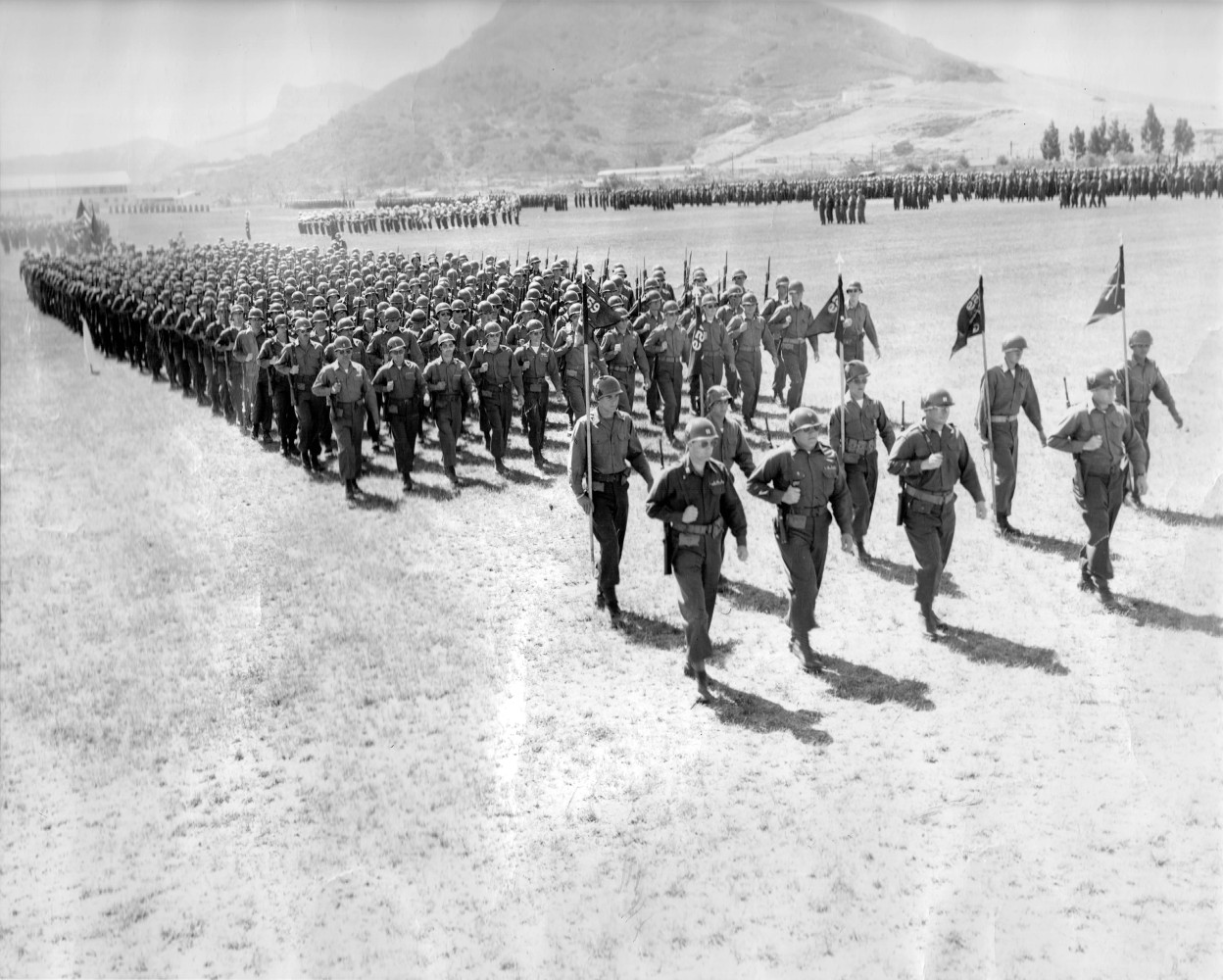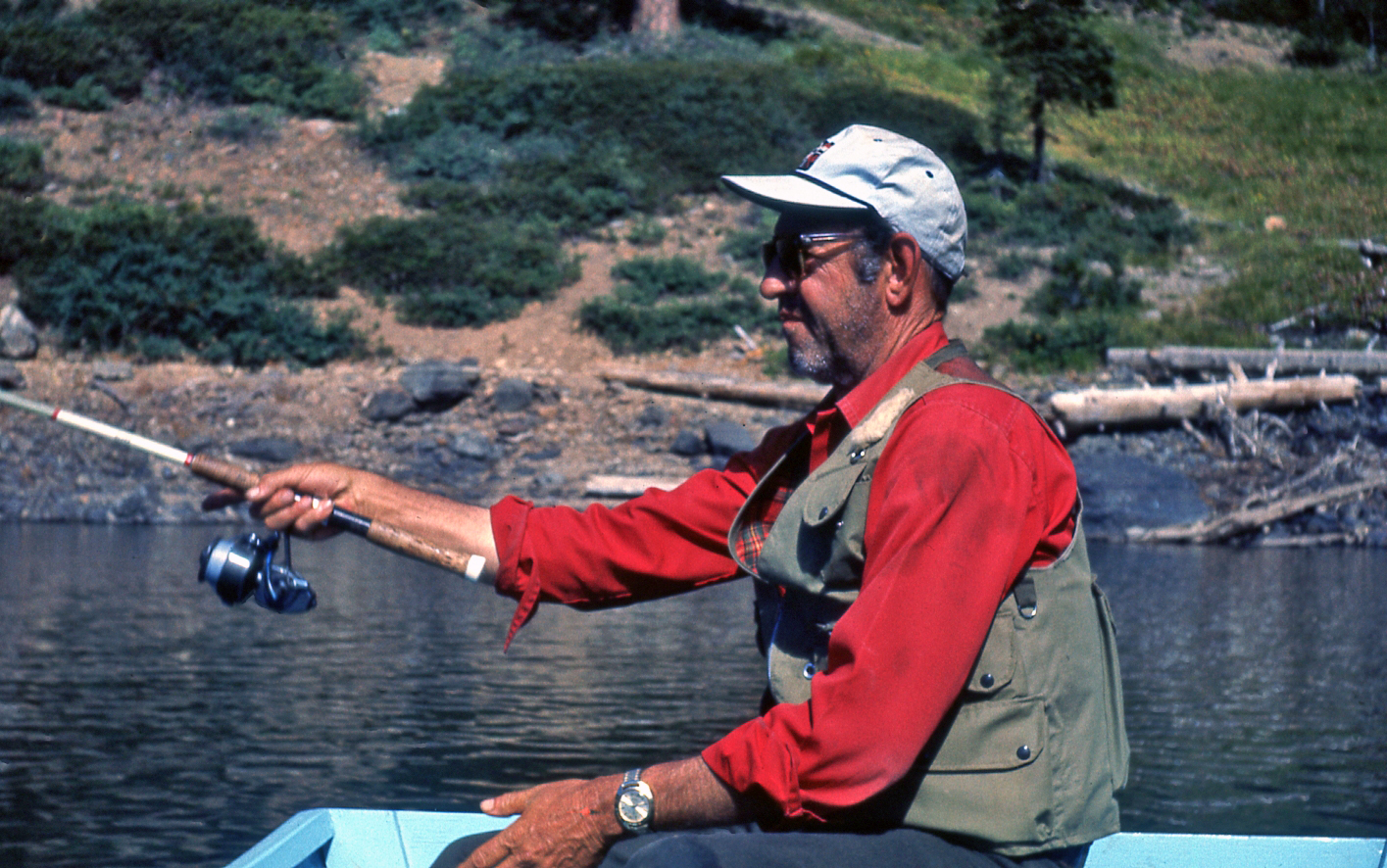|
James F. Clark, Jr. (1924-1999)by Michael S. Clark (with help from Phil Clark)
James, Sr. wanted his son to be named Jamie, the Scottish version of his own name, but the clerk at the registrar's office in Honolulu incorrectly entered the name as James on his birth certificate. The family called the younger James by the nicknames of "Jimmy" and "Junior", even though he hated being called Junior. His scout friends and school friends sometimes called him "Kimo", which is the Hawaiian version of Jimmy. When the computer era came along decades later, and he created an email account with America Online (AOL), he used Kimo for his screen name. Dad was baptized a few days later on Nov. 27, 1924 at Our Lady of Peace Cathedral on Bishop Street in downtown Honolulu by Bishop Stephen P. Alencastre (1876-1940). His Uncle Joe Walsh and Aunt Frances de Harne were his godparents. The cathedral was not the regular church that his family attended, but his baptism was a special event that they wanted performed at the main church in the city. They normally attended Sacred Heart Catholic Church on Wilder Avenue, which was the same church where his parents had been married. It was located just a few blocks from their house. Dad later served as an alter boy at this same church.
Eddie was the youngest of the de Harne boys, and the last to leave home. This was during prohibition when alcohol sales were illegal, and Dad remembered that while Eddie was still at home he used to make a pineapple gin that he called "pineapple swipes". Eddie would have a bucket of fermenting pineapple juice sitting under the stairs, and Dad was told to kick the bucket every time he went by it to stir things up and help the fermentation process. Dad's cousin Hazel, who is younger than he, came sometime in the 1930s to live at Grandma de Harne's house, because her parents, Paul and Emma, had seven other daughters, and they could not care for all of them. Hazel did not like Dad for some reason that he never confided to us, and when we saw her at Aunt Helen's house (single Helen) many years later on a trip to Honolulu, she had no interest in talking with him. She passed by the door to the room where we were visiting with Helen, politely waved, and walked off to another room. Helen inherited the house in 1957 when Grandma de Harne died, and Helen sold it in early 1966 to a developer so that she could move to a smaller, more modern place, where Hazel in later years lived with her. The Wilder Avenue house was subsequently burned to the ground on April 22, 1966 by kids playing with matches, and the spot where it stood paved over as a parking lot for strip mall - the Makiki Shopping Village at the corner of Liholiho and Wilder. 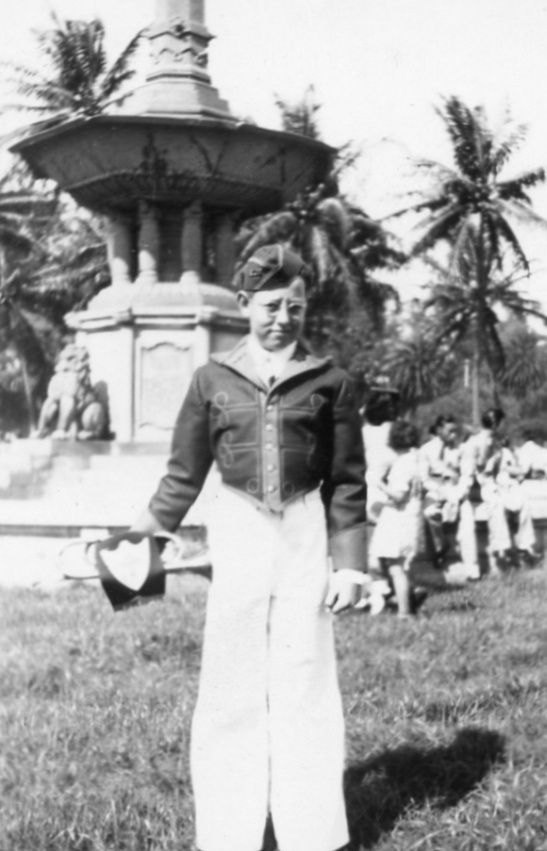
School Years and Sports - Dad attended elementary school at a Catholic Primary School that was run by the Mary Knoll Catholic missionary group. It was located on Wilder Avenue in the same block as the Sacred Heart Catholic church that his family attended. Dad never went to kindergarten, but he did attend grades 1 thru 6 at Mary Knoll. The picture on the right, which shows Dad at the zoo holding a bugle and wearing a band uniform, probably dates either to when he was still at Mary Knoll, or just after he graduated from there. 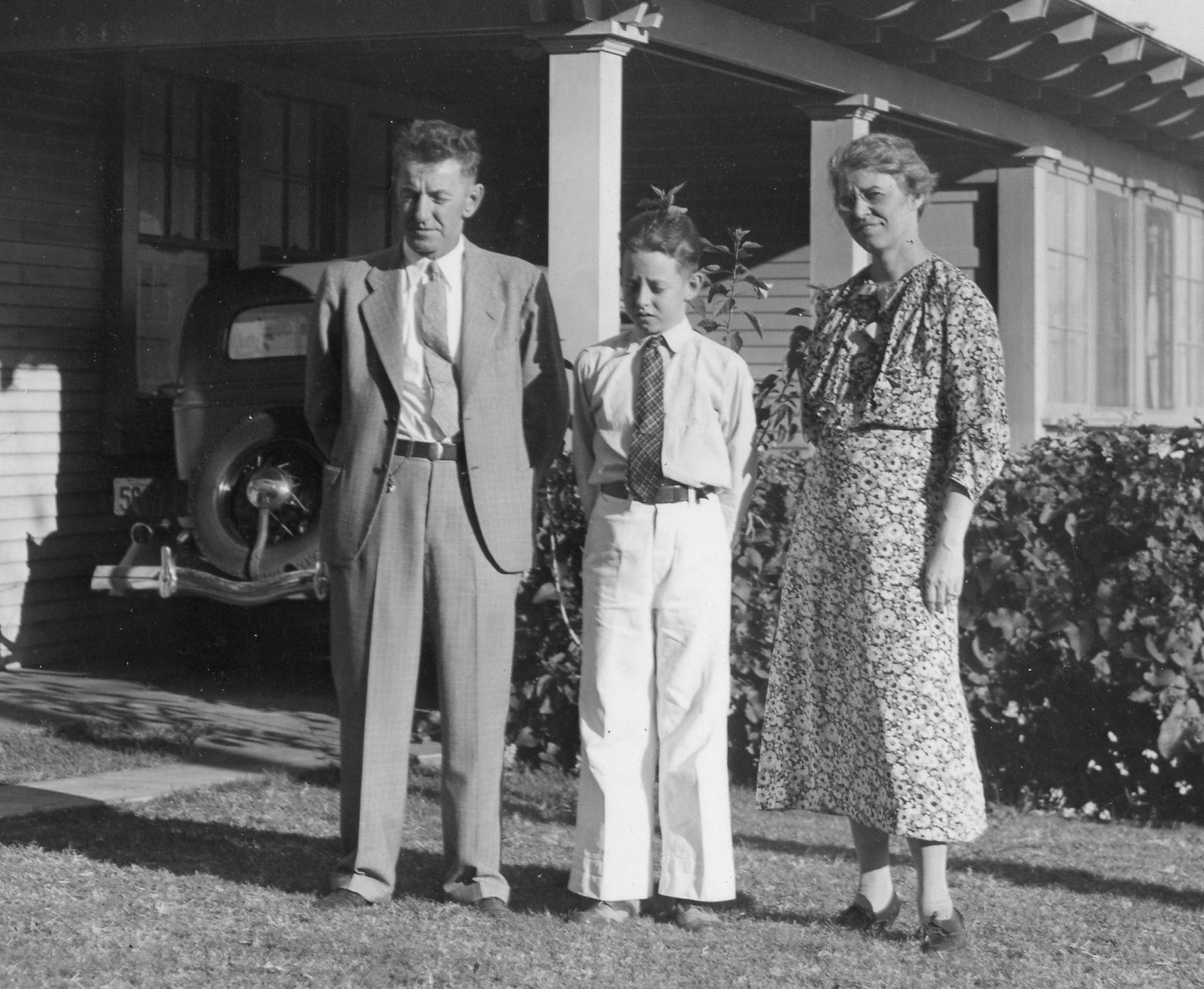
Dad next attended St. Louis College, which was a Catholic school for boys in grades 7 to 12 that was named after the patron saint of Louis Maigret, the first Catholic Bishop of Honolulu. It was run by the Society of Mary, or Marianists, who were a Catholic order that had been founded in France in the early 1800s by St. William Chaminade. The school was located a couple of miles down the street from Grandma's house, and Dad's Uncle Eddie had graduated from there a few years earlier. Classes at St. Louis College where taught by priests and religious brothers, who maintained strict discipline. Dad remembered how one teacher named Brother Ernest Silva threw tennis balls at the backs of boys who failed to pay attention in class. Another teacher named Brother Ernest would tell errant students to go to the front of the class and reach up to pull down a map on a roller that was mounted on the ceiling above their heads, then whack the boys on the backs of their upstretched arms with a yardstick. Fortunately, Dad never had Brother Ernest for a teacher. Dad remembered another teacher named Brother David, who was a native Hawaiian, who taught 10th-grade at the school. He warned his students never to yawn in class, as he considered this an insult. Yet one kid had the audacity to yawn in class anyway, and he was slapped out of his chair by Brother David. St. Louis College had an excellent football team, but Dad was too small to play. However, he did get to play barefoot football with the Makiki Park team, which was an inner city team from his neighborhood that played with the city league. Makiki Park is located on Wilder Ave just a couple blocks from Dad's house, and he had lots of tales about kids getting sprained ankles and broken toes during barefoot football games in this park. Dad and his friends would also play football and other games at Thomas Square Park, which had a huge Banyan Tree that was great fun to climb on, and play tag beneath the branches. Hobbies - Stamp collecting was a very popular hobby in the 1930s, and my Dad was an avid collector. The Attorney General’s office where his father James, Sr. worked was near the post office, and he often brought home stamps, and decorated postal envelopes known cachets for his son Jimmy's collection. Some of these cachets were quite elaborate, and we still have one with signatures on it of the postmaster, and Joseph B. Poindexter, who was Governor at the time for the Territory of Hawaii. James, Sr. would also arrange to have First Day Covers mailed to his son, and many of these covers we still have as well. Dad used to tell us often about a stamp shop in Honolulu that I think was owned by a man named Mr. Best. This shop was very small, and Dad would go there from time to time to buy stamps for his collection. He also followed Mr. Best's advice to concentrate on collecting British Colonial stamps, as these were issued in small quatitites compared to the stamp issues from major countries, which meant they were likely to increase significantly in value in the years to come. Consequently Dad built up a nice collection of these types of stamps. 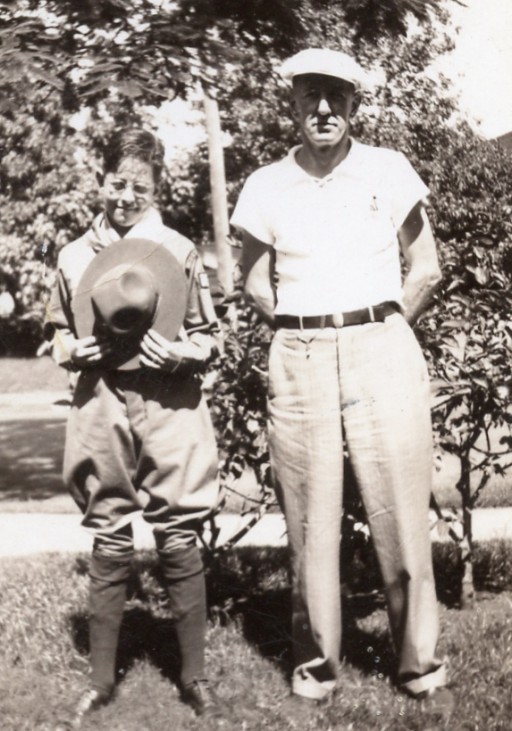
Boy Scouts - When Dad was 12-years old, which would have been in 1936, he joined Boy Scout Troop 69, which was sponsored by Lodge 616 of the Elks Club. His father, who was very active in the Lodge, became a parent on the troop committee at the same time. The scouts of Troop 69 wore purple and white scarves, and met once a week at the Elks Lodge meeting hall in Waikiki. Dad's uncles Maurice and Eddie de Harne from 1917 to 1919 were both Boy Scouts as well in Honolulu Troop XVIII, with both reaching the rank of First Class Scout, and Maurice being elected in 1918 as the Senior Patrol Leader of their troop. Also, one of the members of their troop, Leo de Roo, was recognized in 1918 as the first scout in Hawaii to earn the rank of Eagle. Their Scouting experiences were probably an inspiration for our Dad to join Boy Scouts when he came of age. Although none of the family in Hawaii appear to have been Eagle Scouts, Dad did manage reach the rank of Life Scout with his troop. He also served for a term as the troop Senior Patrol Leader. He recalled that one of the more difficult merit badges that he earned while with this troop was Bird Collecting, which was one of the merit badges required in those days to reach the rank of Eagle. One year the troop went on a bicycle trip around the island of Kauai. They had a fabulous time on this adventure, which included an an ascent of Mt. Wai’ale’ale, which has the reputations of being one of the wettest spots on earth. It was a very muddy ascent all the way up to a rain gauge on the summit. Some of the descent was done by sliding on tea leaves down muddy gullies, which resulted in torn jeans on several of the boys. Dad also recalled seeing a mysterious stone wall on this trip that was reputed to have been built by the Menehune, who are the legendary, elf-like little people of the island. Although Dad loved Boy Scouts, he left the scout troop as soon as he turned 15-years old, so that he could join Sea Scouts and go sailing. He reached the rank of able-bodied seaman with the Sea Scouts, which allowed him to go on sailing trips, and he ultimately went on several voyages. The scout ship was a motorcruiser named the SS Sbank, and the Sea Scout council about this time also received the gift of a yacht from the Trans-Pacific yacht race. This second ship was a large two-masted schooner some 40- to 45-feet long, and Dad was able to sail on it as well. He was in Sea Scouts for about two years, then dropped out in the summer of 1941 right about the time that he had a motorcycle accident. An interesting aside is that my Dad's Uncle Gil Betz, who had been a carpenter in the Navy, built the Wilder family home that Hawaiian Chief Scout James Austin "Kimo" Wilder (1868-1934) probably lived in for a short while. We believe this house was located in the Makiki/Tantalus District of Honolulu on the Makiki Round Top Road, which intersects Wilder Ave. close to where Dad grew up. "Kimo" Wilder's father founded the Wilder Steamship Company, which became the Inter-Island Steam Navigation Company, and he was a prime minister of the Kingdom of Hawaii. Wilder Avenue was named after him. His son Kimo in 1911 started the first Boy Scout Troop in Hawaii, and Kimo was the first Chief Executive for the Aloha Boy Scout Council. He also founded the Sea Scouts, which Dad joined when he got older, and left his original troop. Despite having left Scouts, Dad believed in the program. So when his sons joined Scout Troops years later, he got involved again, and served for a few months in 1967 or 1968 as the Scoutmaster of Troop 505 that met at Marshall Lane Elementary School in Saratoga, California. He also spent a few days one summer, probably the same year or the next, at Boy Scout Camp High Sierra, near Long Barn in the northern Sierras. Elks Club - Jimmy's Dad James Sr. had many interests, but the Honolulu Elks Club was clearly one of his big passions. He was very active in the local lodge, which he served in the position of Tyler (Inner Guard of the Door). When the lodge decided to create a youth group called the Antlers, James Sr. naturally wanted his son involved. Consequently Jimmy was one of seventeen young men who on April 15, 1940, thrity-nine years after the founding of Honolulu Lodge 616 B.P.O.E, became charter members of the Honolulu Antlers. He took the office of sentinel, but we are not sure he shared the same passion for the Elks as his father. Nonetheless, when he retired in Oregon many years later, he did reinstate his membership with the Elks and attended several meetings. 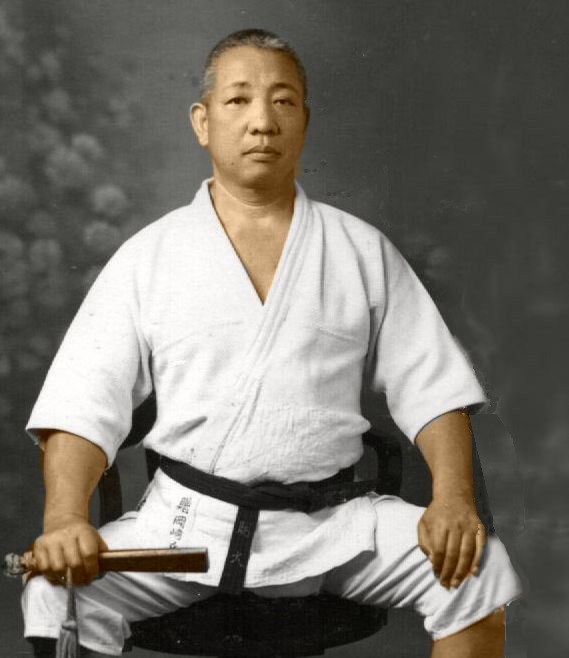
The Okazaki Family - The Okazakis were a Japanese family that lived around the corner at 1558 Kewalo Street, which was basically next door to where Dad lived on Wilder Ave. Mr. Okazaki's actual name was "Henry" Seishiro Okazaki (1890-1951), but Dad called him "Doc". He was a maritial arts expert with a black belt in Judo, and he developed a Jujitsu system called Dan Zan Ryu that was a hybrid of several martial arts techniques. He was probably the best-known martial arts instructor in the islands at the time, which resulted in his being known among the local Judo and Jujitsu community as "Professor". He also ran the Nikko Sanitarium, which was a massage parlor and health spa that was located at 801 S. Hotel Street, less than half a mile southwest from Dad's place. When WWII broke out, Doc became a self-defense instructor for the U.S. Army to teach recruits Dan Zan Ryu Jujitsu, thereby sparing his family from being relocated to a Japanese interment camp. Doc gained his fame when well-known Oklahoma heavyweight boxer Carl "K.O." Morris (1883-1951) visited the islands and issued a challenge to the Asian martial arts community, claiming that his boxing was far superior to their style of fighting. Several Japanese martial arts practitioners responded to his challange, but all were defeated by Morris, causing them to lose face. Okazaki then challenged Morris to a match that was fought on May 19, 1922 in Honolulu, and suffered a broken nose when Morris hit him in the face during the first round. However, Okazaki came back in round two and applied a reverse arm lock to Morris and threw him to the ground, causing Morris to faint from the pain. It appeared to some that Morris' arm had been broken, but the "muscles were merely badly wrenched". Some say that Okazaki later visited Morris in the hospital, and that Morris supposedly finished his stay in the islands by taking classes with Okazaki to learn Jujitsu techniques. (It was not until Sept. 4, 1922 that Morris fought in the ring again.) Doc had other interests, besides just martial arts and massage. For example, he avidly promoted Sumo wrestling in the Islands, even though he was much too small to seriously compete in Sumo contests himself. He also had a pond of giant koi that were dear to him, and Dad recalled Doc going through a bit of a ritual when it was time to feed his fish. Each koi had a name of its own, and when Doc called out the name of each fish, the correct one would respond by bobbing to the surface of the pond. Then lastly, Doc was a devout Christian, who attended the both the Congregational and Methodist churches in Hawaii. Doc's eldest son Hachiro Okazaki (1922-2010) made it abundantly clear during an intereview in 1978 that his father was a Christian, a fact the Hachiro was quite proud of. He said that the churches his father attended were strongly bible-based at the time, and Doc's daughter, Esther Takamoto, said in another interview that her dad faithfully went to church every Sunday, carrying his Bible under his arm. Our Dad had a lot of admiration for the Okazakis, and he learned much from them about Japanese culture and martial arts. Doc's son Hachiro was known to our Dad as "Chi", and he was a little less than two years older than Dad. They were good friends, and Dad had a story about how Chi got into an argument of some sort in a bar, or similar place, after being taunted about being Japanese. He was subsequently set upon by two or more men, and yet despite being outnumbered, Chi won the fight by virtue of his martial arts skills. Though Chi did not start the rumble, when Doc Okazaki learned of this incident, he was furious, and both reprimanded and punished his son for choosing to stay and fight, rather than run away. Youth Accidents - Dad fractured his skull on the weekend of April 13, 1940 when he was 15-years old. He had been given a ride by 19-year old Wilbur Choy in a touring car after hiking in the rain forest near his house. He was riding on the bumper of the car on Tantalus Drive when he fell off onto the street and hit his head. He also ruptured his left eardrum, which resulted in a 25% to 30% loss in hearing on that side. Although my notes show that he was in the 9th grade when this accident took place, it seems more likely that he was a sophmore in the 10th grade. He was in the hospital for about two weeks under the care of a Dr. Cloward, who warned him that the injury might result in an attitude change. When Dad came out of the hospital, he only had six weeks remaining to finish the school year, but his grades went down, so he dropped out. His intent at first was to go back to school when it started up again in the Fall, but he never did, which meant that he never graduated from High School. 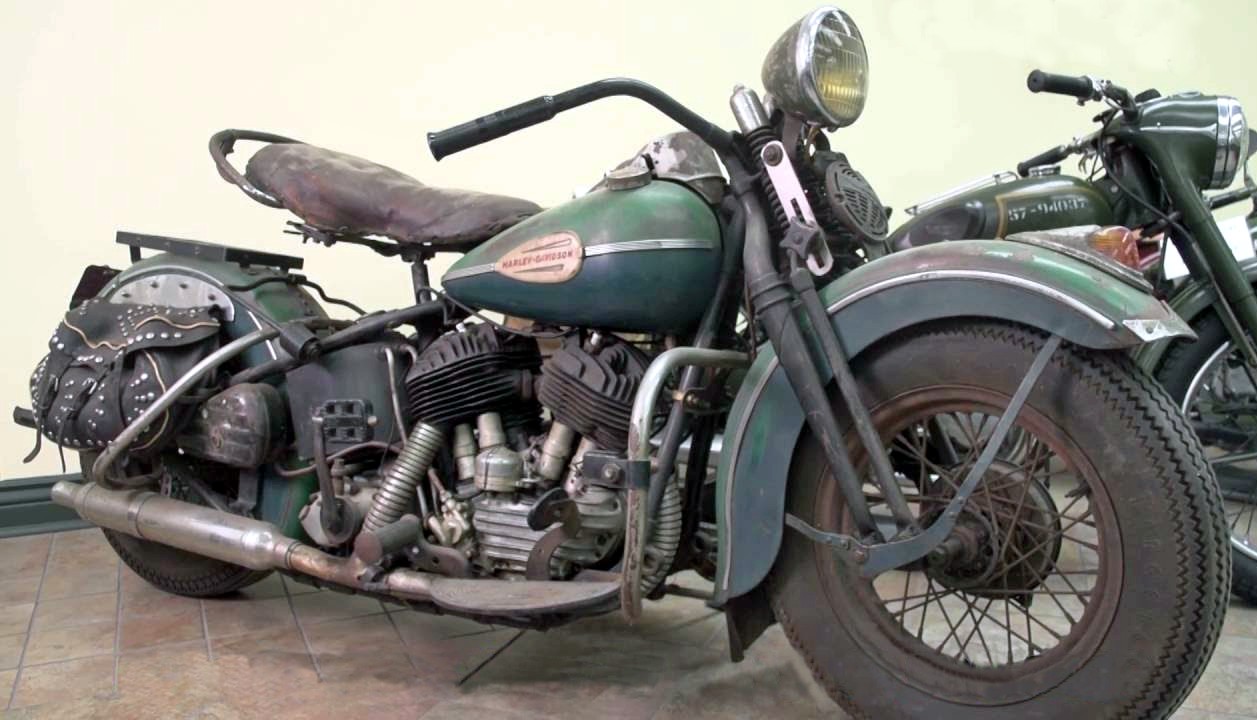
Dad was working at the time as a theater usher, and he was making what he thought was good money, so he proceeded in the summer of 1941, just before his 17th birthday, to buy a Harley-Davidson 74 motorcycle with overhead valves, which is popularly known as a "Knucklehead". As a 74 in2 engine equals about 1,200 cc, this is a pretty large bike for an inexperienced rider. The throttle for his Harley was on the right side of the handle bar, and he modified it by removing the throttle return spring, so that he could keep the throttle open and steer the bike with one hand, while smoking a cigarette with the other. A picture of a 1941 74 cc Harley Knucklehead is shown on the right. Dad was badly skinned up soon after buying his Harley, when he dropped it on himself while riding through a bed of gravel on a turn near the end of Wilder Avenue. He was smoking a cigarette and riding with one hand. He later felt that his earlier accident, in which he fractured his skull, impaired his judgement. He fell on his back, and because the throttle was open, the bike spun around on top of him, grinding his back into the gravel. The resulting road rash was so bad that his father suspended the covers of his bed with wires to keep the sheets from touching his raw skin. He ended up spending his 17th birthday in bed with his father picking pieces of gravel out of his back, which cured his desire to own a motorcycle. He sold the bike shortly afterwards. First Jobs - Dad's first job was when he was 12-years old, and he started out delivering newspapers for the Honolulu Star Bulletin (afternoon edition) for $4.00 a week. He eventually worked up to a wage of $30/month. He initially borrowed a bike from a friend to deliver the papers, but soon bought a bike of his own with his earnings. It was a Western Flyer that cost him $5.00 for a down payment, with payments of $5.00/week for the next several weeks. He later worked for two weeks in the Attorney Generals Office as a junior clerk at $20/week. He had to get a social security number for this job, which his Dad had found for him. He also worked for two summers for the Hawaiian Sugar Planters Association (HSPA) at $1/day in a sugarcane research facility. Later, he received $1.25/week. Both jobs gave 6-days wages for 5-days work. He worked for HSPA when he was 14-years old, and he worked for them for two summers, which was probably the summers of 1939 and 1940 if we have the timing right. When he was old enough, which was between the 11th and 12th grades, Dad got a job as an usher at the Varsity movie theater. He made a pretty good wage at the theater, and it enabled him to buy the motorcycle that we mentioned earlier. He remembered seeing the movie ‘Gone with the Wind’ during his job here dozens of times, as it was a blockbuster hit that had a long run at the Varsity.
His father James, Sr. was visiting with Helen and Maurice de Harne at their house in Wahiawa, having spent the night with them, and he and Maurice early in the morning saw Japanese planes flying over the mountains on leeward side of the island. James, Sr. immediately got in his car and raced back to his house and family. He drove by the battleship S.S. Arizona when it blew up and sank, and the blast was so strong that it rocked the car. His mother Louise was in San Francisco, California when the attack took place, staying with Alice (her younger sister) and Lys Chelli while she underwent radiation treatments for cancer. The cancer had turned up the year before with three lesions in her left ear (cancer of the mastoid), and caused her a great deal of pain. She and her older sister Mary used to clean the wax out of their ears using bobby pins, and Dad felt that this may have been the cause of her cancer. Dad and his friend Bill Souza went to the Scottish Rite Temple after the attack, and helped out as volunteer truck drivers for the Civil Defense. They made two trips to Hickham Field to haul wounded to Queen’s Hospital. It was at the temple where Dad heard that the Army Engineers needed sentries to patrol at Punohou school, but he was underage and needed parental permission. When he went home that night and told his father about his ambulance duty, James Sr was very proud of his son's accomplishment, but he absolutely refused to allow the sentry duty. Dad maintained later that this confrontation was the reason he decided to quit school, but the timing seems off, as he actually dropped out of school several months earlier. Perhaps he intended at some point to go back to school, but this confrontation made up his mind to do otherwise. Although James Sr would not let his son do sentry duty, he suggested that Dad contact his old boy scout troop to see what they were doing to help. This led Dad to patrolling Waikiki on Sunday nights with other scouts looking for fires. The theater manager where Dad worked as an usher also called, because Dad was needed to guard the theater on Monday and Tuesday nights. The War Years - Dad and Bill Souza, who like Dad had also dropped out of high school, went to work for the Hawaiian Contractors, who were managing various jobs and construction projects for the military. They were hiring truck helpers at 50˘/hour, and Dad and his friend applied for the positions. Dad was 17-years old at the time, but he needed to be 18 to take the job. However, when the boss asked Dad his age, and Dad truthfully answered that he was underage, the boss replied right back that he did not hear what Dad was saying. After the boss repeated this a couple of times, Dad got the idea, and he and Bill started in on their new jobs immediately. 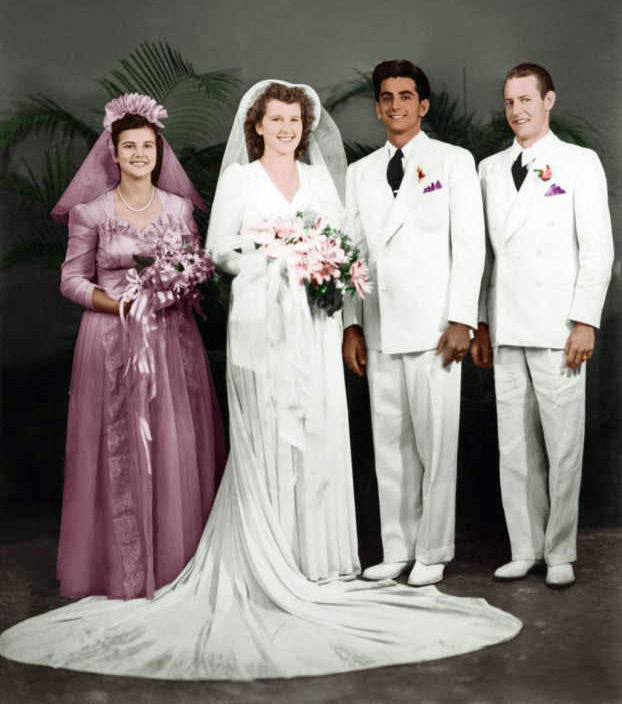
Although the truck job only lasted one week, Dad and Bill soon found work as electricians at the Fort Shafter army base. Dad quit this job two weeks later, and signed up to work for 75˘/hour on a crew digging tunnels for the military defense of the islands. He did not like the tunnel work at first, but later decided that it was okay. He also recalled that the best coffee he ever drank was the boiled coffee that the miners would brew on the job. Dad over time worked several different jobs in the tunnels. He went from a general laborer to a chuck tender at 90˘/hour, and worked his way up from there to working as an actual miner at $1.25/hour. Other jobs included working on a gunnite crew, then as a steel worker, and finally a plumber. He liked the plumbing job, but it shut down after a short time. All of these jobs were either in the tunnels or associated with them. 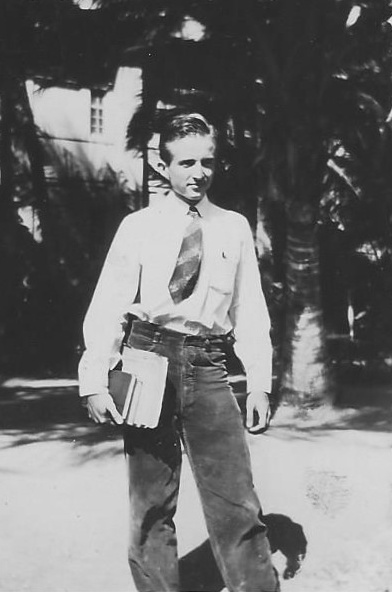
When the tunnel work ended, Dad went back to work as an electrician, the same job he had started with. He went from there to working on a high-line crew on, where he would climb the electric poles, and he remained with this job until he was drafted into the army. He also at one point worked briefly as a carpenter. He spent about 2-1/2 years total on all these various jobs, which included the tunnel work and about 9 months on the high-line crew. His military record states that prior to joining the army he was "employed [as a Lineman IV] by the United States Engineering Department ... to 1945. Climbed poles and attached crossarms, insulators and transformers, connected wires to buildings. Also did interior wiring and connecting of electrical fixtures." Francis William "Bill" Souza (1924-1997) was Dad's best friend when he was working with Bill in the tunnels, and as an electrician. When Bill married Alberta Ebright (1927-2008) on Feb. 22, 1944 in Honolulu, Dad was Bill's best man and witness at the wedding (he to the right of Bill in the photo on the left). Bill eventually went on to become an electrician for the Street Light Division of the City of Honolulu. Although Dad and Bill did not stay in touch over the years, when Dad and Mom got the opportunity in 1978 to return to Oahu and house sit for his Uncle Maurice and Aunt Helen de Harne in Wahiawa for several weeks, he and Bill did get together at Maurice's place to reminisce about the "old times". Stanley Burns Gouveia (1924-2010), who was one of Dad's cousins, was also a classmate of his at St. Louis College. Stanley's grandmother Maria Burns (neé Ferreira), and Dad's grandmother Frances de Harne (neé Gomes) were first cousins, and they sailed together in 1879 when the ship Ravenscrag brought them and their families from the Madeira Islands to Hawaii. When Dad dropped out of high school in April of 1940, Stanley continued his studies at St. Louis, until the Dec. 7, 1941 bombing of Pearl Harbor, when the school became the 147th General Hospital, which tended to over 33,000 patients during the war. The displaced staff and students from the school transferred to McKinley High School, where Stanley later graduated. Because Dad and Stanley were only about a month apart in age, they probably would have graduated at the same time, had Dad not dropped out of school the year before. A picture of Stanley dressed for school is on the right.
The Military Record of James F. Clark, Jr.(serial number RA 30 114 952)
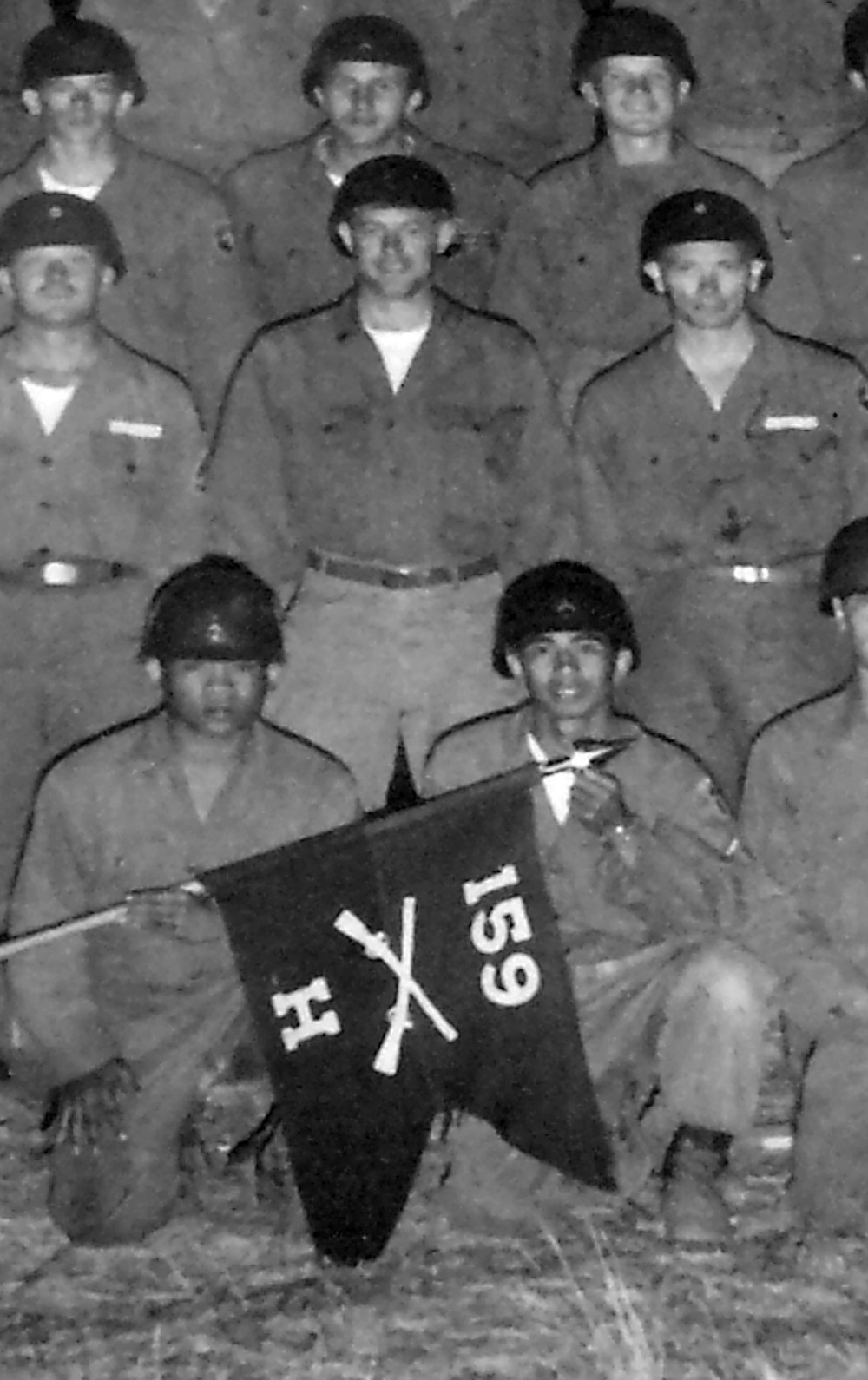
Dec. 28, 1942 - Registered for the U.S. Army draft, which was inactive in Hawaii at the time, as the U.S. Government decreed that all able-bodied men there were needed to fortify the islands in case of a second Japanese attack. However, it was possible to accept military service in lieu of a jail sentence, so some guys who would actually steal a car and then turn themselves in as a way to join the army. Nov. 30, 1944 - Volunteered for the U.S. Army draft, when the prohibiton on accepting draftees from the Hawaiian Islands was lifted. Dad was assigned to Company D of the 100th Training Battalion, which was made up entirely of men from Hawaii. They sailed to Los Angeles, probably sometime in February of 1945, and from there they took a 5-day train ride by way of Santa Fe to Camp Maxey, which is 9 miles north of Paris in Lamar County, Texas. It was well known that Lamar County was a "dry county" where liquor was illegal, so the entire train of 500 to 600 men was basically drunk the entire trip. However, Maxey was just a short distance from the "wet town" of Hugo, Oklahoma, where most days off were spent. March 19, 1945 - Start of Basic Training at Camp Maxey, Lamar County, Texas. Camp Maxey was where Dad had his testing and basic training. He received a high score on the Army General Classification Test (AGCT), and was given the option at Maxey to be a candidate for Officers Training School, but he refused. He was also given the option of taking paratrooper training, but refused this as well. A photo of Dad taken in 1945 at Camp Maxey is shown on the right. It is a detailed view from a group picture of his training unit, which in the photo is identified as Company H of the 159th Battalion. The photo was probably taken at the end of basic training. Following completion of his basic training, he went by train to Seattle, Washington to be sent overseas for duty. The train had a four-hour layover in El Paso, Texas, where everyone went to the local cantina in Juarez. However, a fight broke out, and the military police marched everyone back to the train. There was then a day off in Los Angeles and another in Ventura, before the train reached Camp Adair near Albany, Oregon. Here they stayed for ten days (two weekends) with a half-day spent cutting grass, and another half-day training. Next stop was a weekend in Salem, Oregon, where the nights were spent at the Crystal Ballroom (now gone), which had both upstairs and downstairs dance halls. Then finally on to Fort Lawton on the Puget Sound west of Seattle, Washington where they remained for two days before being shipped overseas. July 14, 1945 - Received certificate for completion of "The Prescribed Course of Training" at Camp Maxey. August 1945 - Sailed from Seattle on the SS President Jackson, a commandered luxury liner that carried 5,000 men. The voyage took 28 days, going by way of Ulithi Island (a small coral atoll) to Luzon, the main island of the Philippines, and the site of the capital city of Manila. There was no naval escort to Ulithi, but two destroyers accompanied the ship for the remaining distance to Luzon. Here an "invasion landing" was made about 55 miles south of Manila at Batankas Bay, where there was no harbor, which meant going ashore in an "LCI (Landing Craft Infantry)".
Dad's designated military specialty was 745 (infantryman), and he was assigned as a casual rifleman replacement to the 55th Engineer Battalion Reinforced. He was qualified in both rifle and machine gun, but he carried an M1 Garand rifle during his initial assignments, this being the standard rifle of the U.S. Army in WWII. Later he carried a Browning Automatic Rifle (BAR), which could fire either in single-shot mode or in short, rapid-fire, machine gun-like bursts. Although the BAR was a formidible weapon, it made a unique sound when fired, which meant that it attracted enemy rifle fire as soon as it was used. He took part in several "mop-up operations", which meant that his unit would go on patrols with an interpreter to look for Japanese soldiers, most of whom refused to surrender. The Hukbalahap (Communist Filipinos) caused just as much trouble for American troops as the Japanese by raiding American ammunition depots, and his unit had orders to shoot them on sight. A second invasion landing, this one in combat, took place in an operation to secure a river mouth in the area of Lucena City. This was probably in the Tayabas Bay at the mouth of the Iyam River, where 50 to 60 yards of beach had to be crossed. Dad's landing craft (LCI) hit the beach in the 6th or 7th wave, which meant that the beach by then was pretty secure, and Dad was able to walk off the LCI with little danger of being shot at. The Japanese were pushed to the north towards a railroad, and caught caught between the beach contingent of American troops and a second American force that came inland through the jungles. Dad also took part in operations in or near San Jose, Santa Cruz, Lipa, San Pablo and Lucena. He also witnessed a Banzai charge near Quezon City in the north. Dad spoke often of the tactics and ingenuity of the Japanese soldiers his unit encountered in the Philippine jungles. The Japanese often hid in the jungle in camoflaged "pillboxes", which were bunkers of earth, stone or concrete. These pillboxes were always arragned in groups of three, with each pillbox being protected by the other two. The Japanese would then cut waist-high tunnels radiating out from each pillboxe through the jungle underbrush to give them a clear line of fire at the waists of any American soldiers walking along trail in the thick jungle undergrowth. Then there was the Japanese soldier who was discovered and shot in a "slit trench' (latrine) that he had crawled through for several yards trying to sneek into an American camp. There were other memories. One was Filipino villages built on high stilts out in the deep jungle with steaming piles of garbage and human waste beneath the houses. Dad said that you could smell them from a considerable distance away.He also remembered a meal of monkey brains that was considered a local delicacy, and a native gin made of wood grain alcohol that made you go blind if you drank too much. These were all part of the experience. Fortunately Dad was not wounded, but he did catch a mosquito-borne illness called Dengue fever. He assumed when the symptoms first appeared that it was Malaria, but learned otherwise after being treated. He also got a fungus infection of the gums known as "trenchmouth", which gave him a lot of trouble later in life, and eventually required that he have his teeth pulled so that he could wear dentures. Aug. 15, 1945 - Victory (VJ Day) is declared. Dad learned about the victory over Japan while walking with other soldiers along a road when an officer in a jeep stopped to give them the news. However, military operations continued as many Japanese soldiers refused to surrender. This meant that even though the war was officially over, fighting continued for several more weeks, during which 50 to 60 American soldiers lost their lives in combat. The dangers were such that Dad did not think he would survive the war and make it home. But he did. The photo of Dad in uniform shown below and right was probably taken in January 1946 in Honolulu just after his return home from the war.
Nov. 30, 1945 - Re-enlisted in the Army as a Private 1st Class (PFC) in the Philippines for an additional year of duty. Those who re-enlisted received their choice of assignment, a 30-day furlough, and a $300 bonus. Dad at this point earned $76/mo in base pay, with another $10/mo for overseas duty, $10/mo for combat infantry, and $6/mo for being a PFC. Those who did not re-enlist remained in the Philippines. Dec. 1945 - Chose Honolulu for his re-enlistment assignment, and made the voyage home on the Isaac Mayer Wise Liberty Ship (a freighter), arriving in Honolulu Harbor just after New Years Day. The voyage took 20 days, with a four-hour stop in Guam. As soon as he was in Hawaii, he was assigned to the Signal Corp at Fort Shafter, and he served at the Helemano radio station in the Koolau Range. One of two duffle bags that he tried to bring home from the war was stolen on the voyage home, and with it his war souvenirs, including a Japanese rifle, photographs, and his military papers. The only picture that survived was a group photo taken in 1945 at Camp Maxey, a detail view of which shows Dad's location in the photo. Another souvenir that made it home is a Colt Model 1911A1 Military .45 cal. pistol, with a serial number of 735059 that indicates a 1941 manufacture date. This pistol, which Dad presumably retrieved from an american officer who had been killed, has a well-worn leather holster, stamped "Graton & Knight CO. Worcester Mass", with what appears to be a 1943? date stamped on it. Jan. 13, 1947 - Received a High School graduation certificate (adult division) from the Department of Instruction for the Territory of Hawaii, which probably was a requirement for his enrollment as a student at the University of Hawaii. He subsequently enrolled in a degree program at the University, and joined the Reserve Officers Training Corp (ROTC) program there as well. This meant that he remained on active duty with the U.S. Army, while pursuing a joint program of academic and military studies. May 18, 1948 - Commissioned a First Lieutenant in the Cadet Regiment, of the Reserve Officers Training Corps (ROTC) at the University of Hawaii, with the rank retroactive to Feb. 27, 1948. June 17, 1949 - Commissioned a Second Lieutenant in the Corps of Military Police of the U.S. Army upon completion of his graduation from the ROTC program at the University of Hawaii. However, the actual announcement of the appointment and awarding of the certificate took place beforehand on March 28, 1948, pending his subsequent graduation. Sept. 14, 1949 - Joined the California National Guard upon retiring from active duty in the army and transferring to the U.S. Army Reserves. Presumably this coincided with his transferring as a student from the University of Hawaii to San Jose State College. He was recognized on Oct. 19, 1949 as a 2nd Lieutenant in the National Guard as well, with the rank retroactive to August 26, 1949. He subsequently received an addiitonal certificate on Dec. 1, 1949 when he was commissioned as a 2nd Lieutenant in the Infantry of the U.S. Army Reserves. June 30, 1951 - Commissioned a First Lieutenant in the California National Guard, with a subsequent commission on August 1, 1951 to the rank of First Lieutenant in the Infantry of the U.S. Army Reserves. This was probably about the same time that he finished his degree at San Jose State College. Sept. 19, 1955 - Commissioned a Captain in the U.S. Army Reserves, with the rank retroactive to August 23, 1955. We do not know if he received a similar commission in the California National Guard, which appears to have been operated completely separate from the U.S. Army, with its own schedule of advancment. July 7, 1958 - Honorably discharged from the U.S. Army Reserves with the rank of Captain, presumably coincident with his resignation from the California National Guard. He stated to me that by 1958, after nearly thirteen years of military service, he had become "fed up" with the National Guard, and the army in general, and that he could no longer put up with the incompetence and tyrannical attitudes of his commanding officers. There is a picture shown below taken of Dad as a Captain leading his California National Guard unit.
Education and Career - When Dad got back from the Philippines, he remained on active duty for a little more than a year with the army, during which time he received a High School equivalency degree before beginning studies in 1947 at the University of Hawaii. Because he was a returning veteran, his education was covered under the recently passed GI bill. He moved back in for a time with Grandma and his Aunt Helen, which was convenient as the University was located in the same area of Honolulu as their Wilder Avenue house. He also enrolled in the Reserve Officer Training Corp (ROTC), to become an army officer, which provided him an additonal stipend to what he received from the GI bill. He also joined the University swim team, and competed in the butterfly and freestyle events. It was two years into his studies at the University, after Dad had completed his ROTC training and been commissioned an officer, when he began to feel that there was nothing left for him in Hawaii, so he transferred in the Fall of 1949 to San Jose State College in California. Here he began taking classes in drafting and Mechanical Engineering. He also continued to compete on the college swim team. In addition, he joined the Theta Chi fraternity, where he resided in the fraternity house, which was either located on campus, or very close by. Dad's best friend at San Jose State was Carlos R. Cavanagh (1923-2012), who went by the nickname "Charlie". The two of them had a lot in common. Charlie had been born in the Philippines, and lived for a few years in Santa Cruz (California), before moving in 1935 to Honolulu, where he went with Dad to St. Louis College. Charlie was a year or so older than Dad, so they may not have been together in the same classes, but they definitely would have known each other there. When WWII came along Charlie eventually ended up overseas in the Pacific Theater as a Photographers Mate in the Navy Seabees, where he filmed parts of the Battles of Guam and Iowa Jima. Some of his film footage appears in John Wayne's 1949 movie the "Sands of Iowa Jima". Then, after the war, he ended up with Dad pursuing a degree at San Jose State. My understanding is that Charlie was also a brother with Dad in the Theta Chi fraternity, but that is not a certainty. Dad's plan all along was to obtain a Bachelor of Science degree in Mechanical Engineering. However, his friend Charlie talked him into changing his major in the last year to Political Administration with a minor in Statistics. This was probably, more or less, the same degree that Charlie was pursuing, as he had a job, which may have actually been an internship, with the City of San Jose Planning Department. Dad completed his Political Administration degree in 1951, and graduated two classes short of the engineering degree that he had originally started with. Although Dad did not have an engineering degree, he always considered himself an engineer. He was also a skilled draftsman, who could design buildings, understood electrical wiring and construction, and knew how to manage construction projects. Alhtough he was able to build an impressive resume over the years with his experience and skills, he was hindered in his career by being a trained engineer without the certifiction of an appropriate college engineering degree. His failure to follow through with his engineering degree would prove in later years to be a decision that he would regret many times. 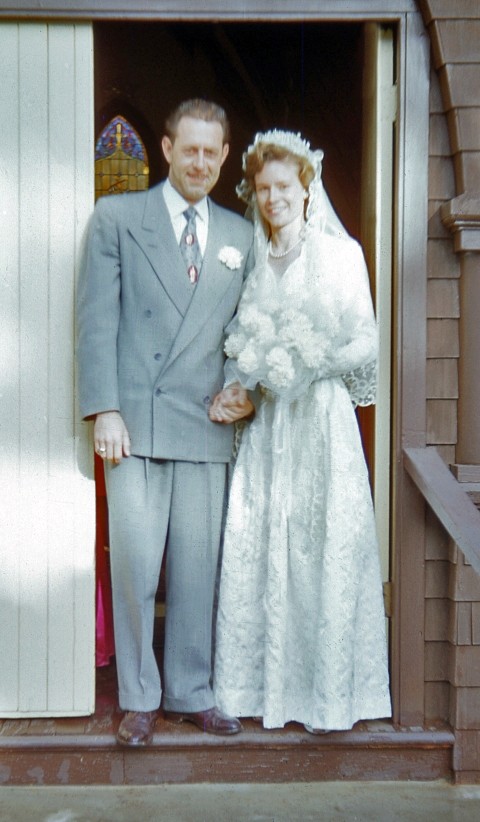
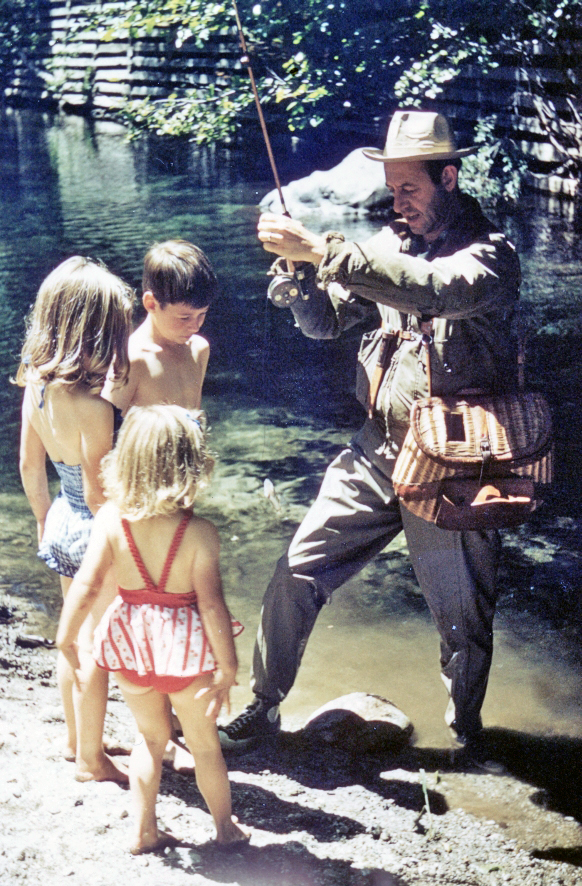
Dad decided after the operation that he needed to be in a warmer climate, and when he threatened to quit his job at Dole, they offered to transfer him to their Salem, Oregon mushroom farm as the motorpool superintendant. Unfortunately the company was sold again not long after Dad's transfer, and the new owners purged the organization of all of the old leadership, which resulted in Dad being laid off. The Soquel and Ventura facilities were eventually bought by Vaughn Paul, a friend of Freeman Bower's son Bobby, and a previous assistant to Dad at the Soquel plant. Vaughn Paul incorporated as King Mushrooms, but I believe that he ultimately went bankrupt, and neither facility, nor the Salem plant for that matter, exists anymore.
Final Years - Dad smoked cigarettes since he was 15 years old, and he contracted bladder cancer in later years, along with a touch of emphysema. These illneses inspired him to finally quit smoking, but a lot of damage had already been done to his health, and he was not consistant about going to see the doctor on a regular a basis. He died on July 7, 1999 at his trailer in Soquel at the age of 74 years. He was supposed to go to see the doctor that very morning, when he had an aneuryism as he was in the bathroom getting ready to go. He was already gone when daughter Linda arrived later in the morning to give him a ride to the doctor's office. His funeral service was held at St. Josephs Catholic Church on Monterey Ave. in Capitola. He is buried with wife Jackie in Salem, Oregon in the City View Cemetery, where he has a military tombstone provided by the army.
|
 Genealogy of the Clark Family
Genealogy of the Clark Family 


